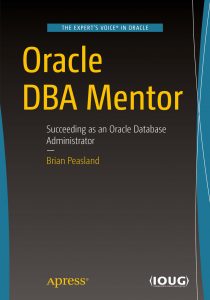I have to say that Oracle Corporation is not looking like a company that knows what its doing. At least when it comes to getting Oracle 23ai shipped out the door for on-premise customers. The saga continues and no mention from Oracle why the continued delays. If I’m an Oracle Cloud customer, I can enjoy the 23ai new features today! But for us on-prem customers, we continue to wait.
Silence from Oracle as to the reason for the delay is only going to create FUD: Fear, Uncertainty, Doubt. Oracle 23ai was released to cloud customers in September 2023. Here we are over 14 months later and Oracle has only shipped 23ai to on-premise Engineered customers, i.e. Exadata and Oracle Database Appliance. Here is where the uncertainty comes in. If Oracle 23ai is in good enough shape for cloud customers, and 23ai is in good enough shape for engineered systems, then why isn’t 23ai in good enough shape for my lowly on-premise deployments? Now some readers might be saying that if I want to use 23ai so badly, just jump into the cloud. Well moving the cloud may not be in the best interests of my company’s important enterprise database systems. If Oracle can’t give me 23ai on-prem after this length of time, FUD tells me something might be wrong and moving to the cloud will be moving my important databases into a potentially bad situation. Failure to provide 23ai at this juncture gives me doubts that I won’t have smooth operations in the cloud.
Oracle has been busy as of late updating MOS Note 742060.1 Release Schedule of Current Database Releases. I have this note bookmarked and then I have my MOS account send me an email whenever a bookmarked note gets updated. I’ve been watching this document get updated quite frequently here in November 2024. On Nov 1, they updated the roadmap for 19c, 21c, and 23ai. Then on Nov 19, they updated the 19c LSP dates. And just yesterday, they updated Premier Support (PS) for 19c yet again. The good news is that Oracle 19c will now be provided with Premier Support until December 2029, over five years from now! The bad news is that Oracle 19c started Premier Support in 2019 so the stable 19c version will be on PS for over a decade. At this rate, it will be even longer than 10 years as there is no certainty that Oracle won’t delay the release of 23ai even further. All Oracle is good at lately in this regard is just pushing back the dates. They certainly are not good at delivering what is supposed to be a finished product.
Yesterday, Oracle updated Note 742060.1 to indicate the newest timeline for shipping 23ai to on-prem customers. That doc now says that the release date for 23ai on Linux x86-64, and other on-prem platforms, is now TBA. To Be Announced. Does anyone want to tell Oracle that they already announced the release date! Three times! First, 23ai on-prem was announced to be released 1H2024. That’s the first half of 2024. Then they announced 2H2024. Then they announced 2025. Not the first half of the year or the second half of the year, but Oracle gave themselves a window of an entire year. FUD is creeping up again because without Oracle providing more details, I’m going to fear the worst and think that Oracle has no plans to even ship 23ai to on-prem customers in 2025 at all. Its looking like Oracle won’t even be able to ship in a window that was a year long!
I was planning on a 23ai upgrade for all my database systems in 2024 or even the early part of 2025. As of now, I’m delaying that upgrade project for the foreseeable future. I do have a different project to move my Oracle Enterprise Manager systems to new servers. I was going to install EM24c on the new machines and move everything over. Note 793512.1 Release Schedule of Enterprise Manager Releases and Patchsets tells me that EM24c will be released 2H2024, but at this point I’m not buying it. Its the end of November and not a word on EM24c hitting the street. Oracle hasn’t even bothered to update the ‘c’ to ‘ai’ in its EM nomenclature. So I’m thinking EM24ai won’t see the light of day this year at all.






